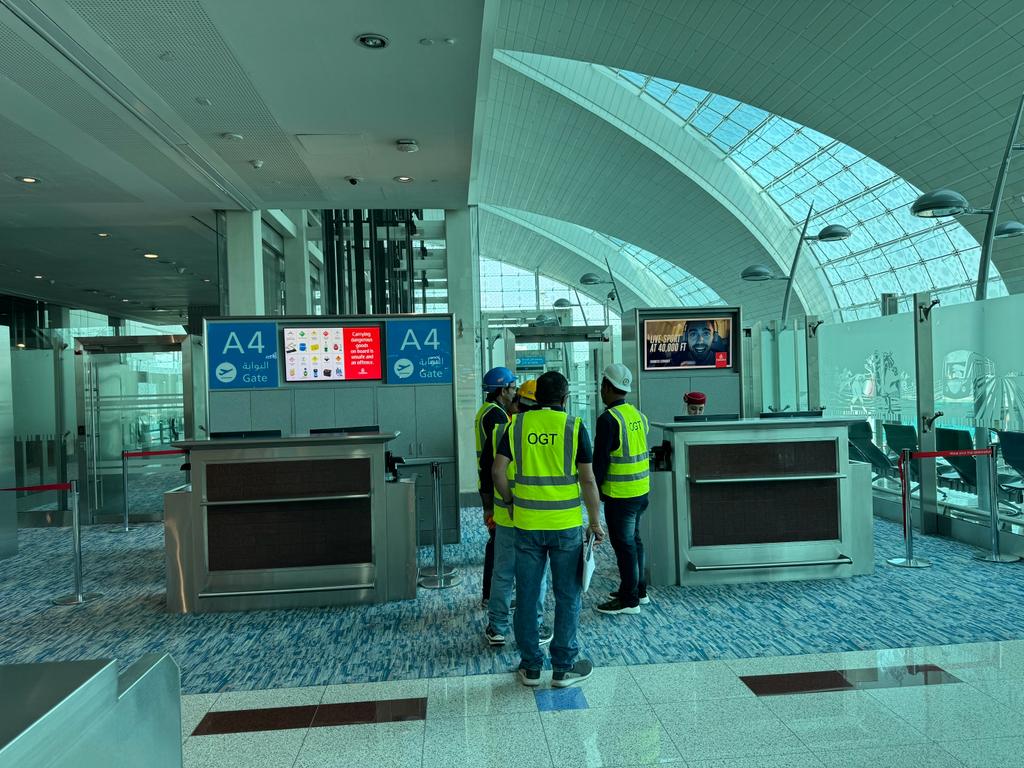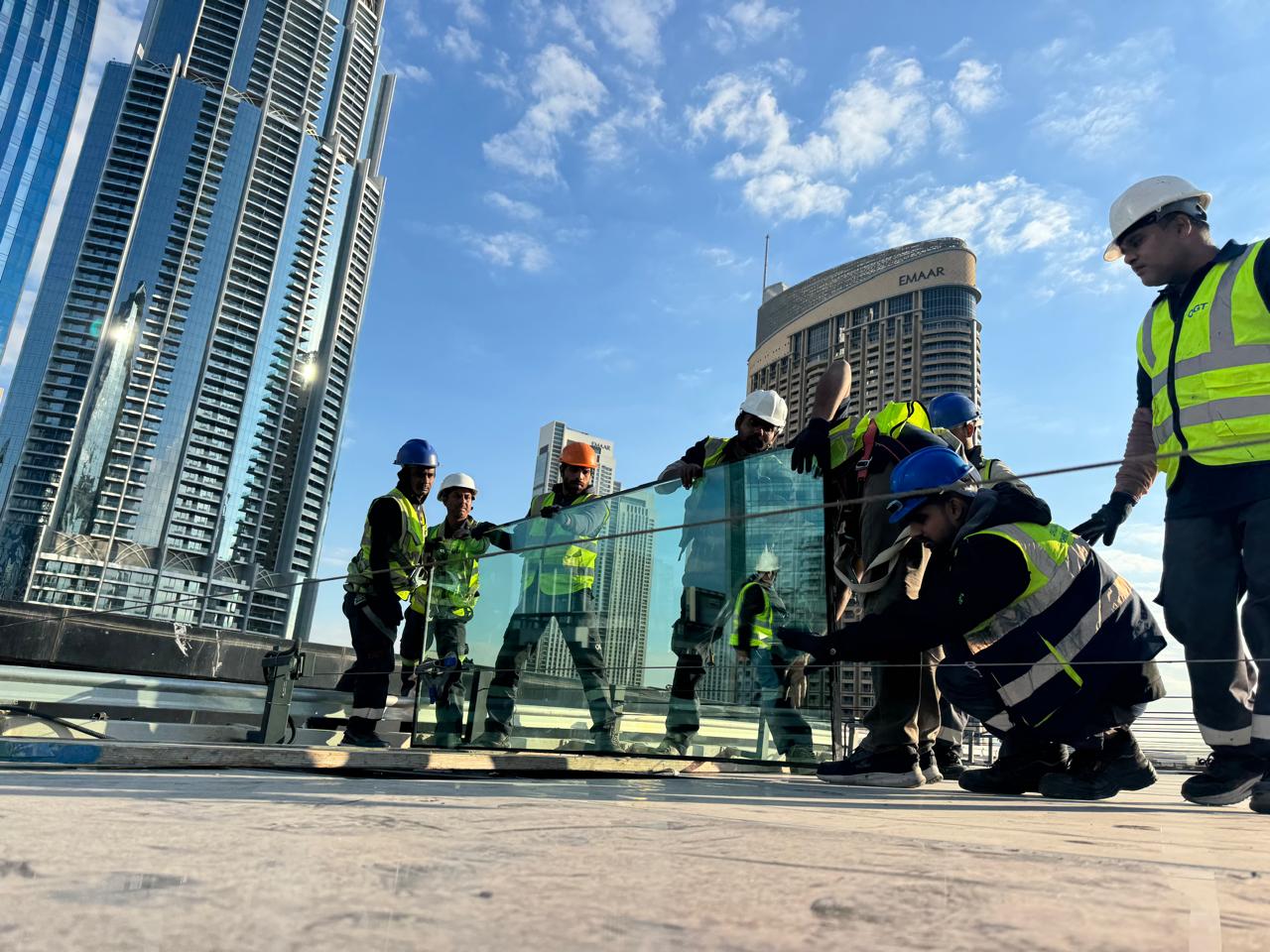If the glass requires lamination process, it is loaded to the Loading station and is transferred to the Washing Machine for Cleaning using treated water from Reverse Osmosis (R.O.) Plant.
Once the glass has been washed, using the Over head Crane with Automatic Lifters the first glass is lifted thereafter, the PVB is au- tomatically applied to the surface of the glass, after which the second glass is lifted glass and placed for accurate pairing applying PVB interlayer in between.
PVB film is cut and trimmed according to the size of the glass and the unit is transferred to the heating Furnace.
The glass batches of pre-laminated glass are fed / placed into the Autoclave cycle for final de-airing process. Glass processing in Auto Clave is a five hour – cycle for pressurized heating, cooling and re-pressurizing process.
Washed glass is loaded to the loading station.
As per Client approval, the Glass is positioned to the Printing Machine (Keraglass) in which appropriate parameter is applied by the operator, for Silkscreen Printed design.
The paint is poured to the silkscreen frame which is the n applied by squeegee, signal- ing the start of the production.
Once the printing is finished the glass is transferred automatically to the heating chamber for the drying process. The glass is then transported to the Tempering Machine for the final curing of paint.
The Ceramic Fritted glasses can also be laminated or double glazed if required.
After tempering quality has been checked and ensured, the glass units proceed to Double Glazing, Laminating, and Ceramic Print- ing Sections or directly for Packing and Delivery in cases of single tempered glass.
Each glass is ensured to have no damage or scratches and has passed Quality Control checking before sending to Packing Division.
The glasses are covered with plastics and placed in wooden cases. These cases are finally sealed and tied with steel belt straps and are made ready for Delivery.
Delivery is done through BGF vehicles that have been specially modified for carrying glasses

